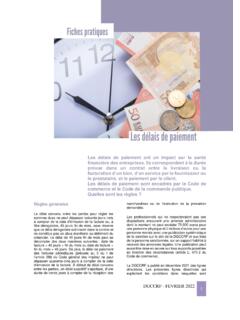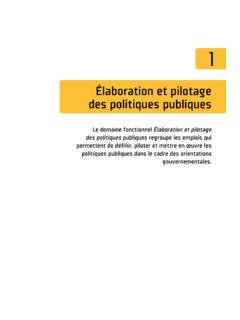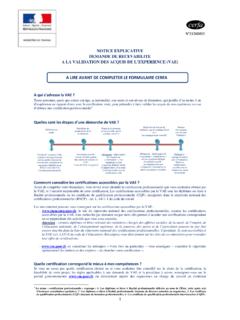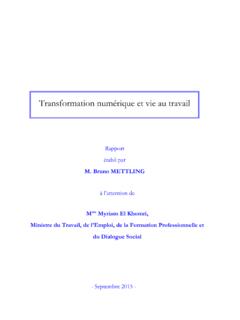Transcription of A brief history of educational assessment in the Philippines
1 Magno, C. 140 ISSN 2094-5876 educational Measurement and Evaluation Review (EMER eview), July 2010 educational Measurement and Evaluation Review (2010), Vol. 1, 140-149 2010 Philippine educational Measurement and Evaluation Association A brief history of educational assessment in the Philippines Carlo Magno De La Salle University, Manila, Philippines Abstract The report presents a primer on the history of educational assessment in the Philippines . The history of educational assessment is described by the different pillars that contributed to its development. These factors include timelines of government mandates, studies done in the national level, universities that shape experts in the field, professional association, and pioneered researches. The history of educational assessment is divided by the early years, contemporary period, and future direction.
2 The early years include the Monroe survey, Research, Evaluation and Guidance Division of the Bureau of Public Schools, Economic Survey Committee, Prosser Survey, and UNESCO survey. The contemporary period is marked by the EDCOM report of 1991, Philippine Education Sector Study, the role of the Fund for Assistance to Private Organization (FAPE) and the creation of the Center for educational Measurement (CEM) and the Asian Psychological Services and assessment Corporation (APSA). The article described future directions of educational assessment about the expanding role of educational assessment specialists in school and creating niches for future studies. Keywords: educational assessment , history of educational assessment Introduction The growth and development of a scientific discipline depends on the contribution of experts and events that led to the construction of knowledge.
3 The history of educational assessment in the Philippines is likewise shaped by the contribution of experts in line with research, government policies on educational development, universities that produced competent experts and professional associations that provide a venue for experts to promote knowledge. I shall briefly present the history of educational assessment , measurement, and evaluation in the Philippines based on these four pillars that influence the development of the field. It is important to put into account the history of educational assessment in the Philippines to reorient students and the primary practitioners of assessment in educational contexts about its rich origins. Students taking courses in educational measurement and evaluation and similar courses ( , psychological testing, psychometrics) are usually oriented with the western development and history of Magno, C.
4 141 ISSN 2094-5876 educational Measurement and Evaluation Review (EMER eview), July 2010 educational assessment . As a consequence, they are more familiar with the development of educational assessment outside of their country. Students are familiar with the Binet and Weschler scales but not with local intelligence and personality measures in the Philippines . This scenario is considered limiting because in order for one to contribute to the development of educational assessment , one must know where to begin the development and which specific area one can contribute. A timeline of events that shaped educational assessment allows contemporary experts and practitioners to further develop and advance the use of methods, techniques, theory, and approaches in the field (Magno & Ouano, 2009).
5 The first part of the article enumerates the pioneering studies in educational assessment in the Philippines (Monroe Survey, economic survey committee, Prosser survey, UNESCO, EDCOM, PESS) and government policies that were made (Research, Evaluation, and Guidance Division of the Bureau of Public Schools, Joint Congressional Committee on Education). The second part presents the universities that offer programs on educational measurement and evaluation, professional associations, as well as educational testing and assessment institutions. assessment in the Early Years Monroe Survey (1925). Formal assessment in the Philippines started as a mandate from the government to look into the educational status of the country (Elevazo, 1968). The first assessment was conducted through a survey authorized by the Philippine legislature in 1925.
6 The legislature created the Board of educational Survey headed by Paul Monroe, and later, this board appointed an educational Survey Commission who was also headed by Paul Monroe. This commission visited different schools in the Philippines . The commission observed different activities conducted in schools around the Philippines . The results of the survey reported the following: 1. The public school system that is highly centralized in administration needs to be humanized and made less mechanical. 2. Textbook and materials need to be adapted to Philippine life. 3. The secondary education did not prepare for life and recommended training in agriculture, commerce, and industry. 4. The standards of the University of the Philippines were high and should be maintained by freeing the university from political interference.
7 5. Higher education be concentrated in Manila. 6. English as medium of instruction was best. The use of local dialect in teaching character education was suggested. 7. Almost all teachers (95%) were not professionally trained for teaching. 8. Private schools except under the religious groups were found to be unsatisfactory. Research, Evaluation, and Guidance Division of the Bureau of Public Schools. This division started as the Measurement and Research Division in 1924 Magno, C. 142 ISSN 2094-5876 educational Measurement and Evaluation Review (EMER eview), July 2010 which was an off-shoot of the Monroe Survey. It was intended to be the major agent of research in the Philippines . Its functions were to: 1. coordinate the work of teachers and supervisors in carrying out testing and research programs 2. conduct educational surveys 3.
8 Construct and standardize achievement tests Economic Survey Committee. In a legislative mandate in 1927, the director of education created the Economic Survey Committee headed by Gilbert Perez of the Bureau of Education. The survey studied the economic condition of the Philippines . They made recommendations as to the best means by which graduates of the public school could be absorbed to the economic life of the country. The results of the survey pertaining to education include the following: 1. Vocational education is relevant to the economic and social status of the people. 2. It was recommended that the work of the schools should not be to develop a peasantry class but to train intelligent, civic-minded homemakers, skilled workers, and artisans. 3. Devote secondary education to agriculture, trades, industry, commerce, and home economics.
9 The Prosser Survey. In 1930, C. A. Prosser made a follow-up study on vocational education in the Philippines . He observed various types of schools and schoolwork. He interviewed school officials and businessmen. He recommended in the survey to improve various phases of the vocational educational such as 7th grade shopwork, provincial trade schools, practical arts training in the regular high schools, home economics, placement work, gardening, and agricultural education. Other Government-Commissioned Surveys. After the Prosser survey, there were several surveys conducted to determine mostly the quality of schools in the country after the 1930s. All of these surveys were government-commissioned like the Quezon educational Survey in 1935 headed by Dr. Jorge C. Bacobo. Another study was made in 1939, which is a sequel to the Quezon educational Surveys which made a thorough study of existing educational methods, curricula, and facilities and recommended changes on financing public education in the country.
10 This was followed by another congressional survey in 1948 by the Joint Congressional Committee on Education to look into the independence of the Philippines from America. This study employed several methodologies. UNESCO Survey (1949). The UNESCO undertook a survey on Philippine Education from March 30 to April 16, 1948 headed by Mary Trevelyan. The objective of the survey was to look at the educational situation of the Philippines to guide planners of subsequent educational missions to the Philippines . The report of the surveys was gathered from a conference with educators and layman from private and public school all over the country. The following were the results: 1. There is a language problem. Magno, C. 143 ISSN 2094-5876 educational Measurement and Evaluation Review (EMER eview), July 2010 2.

















